Marc Weidenbaum's Blog, page 483
October 15, 2012
Loscil Live Set (MP3)
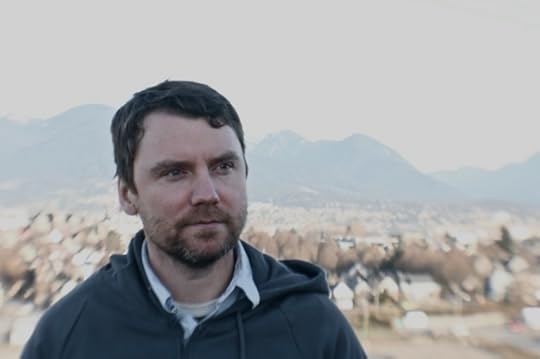
Loscil, aka Scott Morgan of Vancouver, Canada, has just one track associated with his SoundCloud account, and it’s been up for seven months. What it is is a live set, recorded two years ago next month, back in November 2010, when he opened for Tim Hecker at Vancouver’s Western Front. It’s an alternately sinuous and pulsing ambient study of patterns, all subdued heartbeat rhythms and cumulous spaciousness.
Track originally posted for free download at soundcloud.com/loscil. His website is loscil.ca, but it appears not to have been updated since July 2009, at least not its news page, whereas over at twitter.com/_loscil_ he’s a fairly regular presence. More music at loscil.bandcamp.com.
October 13, 2012
Gentle While the World Isn’t
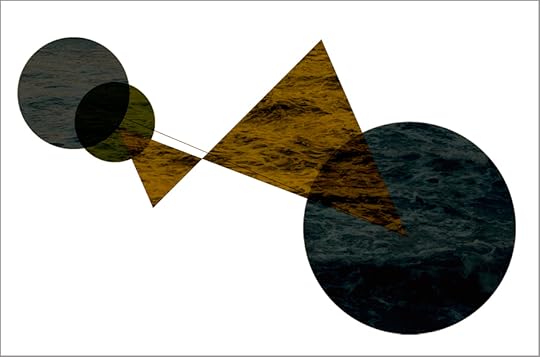
Jared Smyth titled a recent SoundCloud upload of his “for saturday afternoon bleedthrough broadcasts” and provided by way of a liner note a simple string of factoids: “open reel tape loops, 2880, guitar, mic(s), and feedback mixer.” (The “2880″ is likely the Electro-Harmonix 2880, which aligns with the sense of layering throughout.) The result is a lovely swath of everyday ambience: gentle strings resounding at a rarefied pace amid a white-noise haze of lightly gritty interference, out of which emanates the slightly audible hint of conversation. It’s the sound of someone who’s decided to make something beautiful while the rest of the world goes about its urgent business.
Track originally posted for free download at soundcloud.com/jared-smyth. More on Smyth at jaredsmyth.info and uprlip.com.
Past Week at Twitter.com/Disquiet
Obituary for late pirate radio figure Paddy Roy Bates (b. 1921): http://t.co/790KuSX1 #
Reportedly deceased: radio pirate Paddy Roy Bates (b. 1921), founder of the Principality of Sealand. #
Because nothing says "electric" like an unintended receptacle for pine needles: http://t.co/p8nzOjRg #
Tomorrow in "sound" class, "product design": implicit v explicit, product v category, intended v unintended, Tati/Playtime, edible acoustics #
The myth of the paperless office is the desk covered with screens. #
Tom Marioni's Musical Instrument That Cannot Be Played (2003): http://t.co/FFMYHkp8 #
Detail of grid of exposed cassette tapes that is Brian Caraway's Counter Force (2011): http://t.co/J8ENt34d #
Somewhat confused that Philip Glass was born just 5 years after Glenn Gould. Then again, rock-era technology influenced both worldviews. #
Man, last night's episode of Alphas opened with the Tuvan-throat-singing mutant. Good times. #
"After 10 years we still hear the word 'robospeak' as people pass by our store. It's Robotspeak!" Happy birthday to an SF institution. #
Over 20 tracks in latest @djunto, with hours to go. Each adds a single element to duet by composer Kenneth Kirschner: https://t.co/BLNzb1H4 #
RIP, jazz saxophonist John Tchicai (b. 1936), whom I had the pleasure to get to know when we both lived in the Sacramento area. #
The new rjdj.me site is live: "We don't do apps. We craft sonic experiences!" #
Experimenting with using Notes instead of Stickes in OS X, so they'll sync across devices. Any way to adjust leading? #
Information flows through this: http://t.co/ls95gfTu #
Ah the music in Walter's head during interrogation in Fringe is same that haunts Juliette Binoche in Blue. Post update: http://t.co/0y67ulCh #
Now 10 @djunto tracks that add a single element to pre-existing duet by composer Kenneth Kirschner for viola and piano: http://t.co/lSzme8ob #
Today's schedule: type, type, type, read, type, Nick Lowe (3:35pm – 4:25pm), type type, jambalaya, type, watch, read. #
RIP, Howard H. Scott (b. 1920), "of the team at Columbia Records that introduced the long-playing vinyl record in 1948" http://t.co/1m8u4WoE #
The RjDj app is still in the iTunes app store. It won't be soon. Download while you can. Highly recommended. Details: http://t.co/JlEAGl9f #
Despite appearances, use of "ambient" in steady decline since 1994, at least according to Google Ngram: http://t.co/GaSdVpdL #
Use of word "disquiet" dipped for first six years after I purchased the .com domain name: http://t.co/DJj72HqJ #
Fact that "clone wars" needs Wikipedia disambiguation page. Fact that I'm looking at it. Chart of "disambiguation" use: http://t.co/gzQ2n5Tb #
New @disquiet Twitter background image is Oliver Munday poster for @apexart exhibit organized by @notrobwalker, sound by @djunto. #
Beautiful first 5 @djunto entries. Each adds an element to a piano/viola duet by Kenneth Kirschner & Tawnya Popoff: https://t.co/djjhqiob #
Using @googledrive with students in "sound" class I'm teaching; they save & share their semi-daily sound journals. Works well. #
The serrated silhouette of the stealth bomber over San Francisco is particularly Minecraft on this blue-sky day. #
October 12, 2012
A Grace Note’s Grace Note
 Like the best Ameritronic music (that’s an unnecessary but useful amalgam of Americana and electronic), Western Mourning by Darcy Jean and Jeff Morton has all the stuff of songs, minus the songs themselves. There are loose semblances of tonal structures, and fairly recognizable instrumentation, notably the lightly struck guitars, and there are production effects that lend depth and resonance, and even if there aren’t songs there are compositional approaches, an inherent sense of development, even if it’s more a matter of sonic inquisitiveness than of melodic evolution. In “Lead a Horse to Drinking,” the shimmer of a gently touched guitar string, what might be a grace note’s grace note, expands into several seconds of winsome feedback (MP3). In “Don’t Take Your Gun and Go Into Town,” the echo finds a comfort zone between the concrete-and-iron aesthetic of industrial music and the rural affect of country music (MP3). And “Cold as the Clay” makes much of bent notes and erratic percussion (MP3). The titles themselves hint at the duo’s purposefully pedestrian intent. “Don’t Take Your Gun and Go Into Town” seems to remove the poetry from the similar Johnny Cash refrain, while “Cold as the Clay” adds a beat and thus diminishes the readily available alliteration. “Lead a Horse to Drinking” seems just shy of the jokey wordplay that emanates from so many Nashville publishing houses.
Like the best Ameritronic music (that’s an unnecessary but useful amalgam of Americana and electronic), Western Mourning by Darcy Jean and Jeff Morton has all the stuff of songs, minus the songs themselves. There are loose semblances of tonal structures, and fairly recognizable instrumentation, notably the lightly struck guitars, and there are production effects that lend depth and resonance, and even if there aren’t songs there are compositional approaches, an inherent sense of development, even if it’s more a matter of sonic inquisitiveness than of melodic evolution. In “Lead a Horse to Drinking,” the shimmer of a gently touched guitar string, what might be a grace note’s grace note, expands into several seconds of winsome feedback (MP3). In “Don’t Take Your Gun and Go Into Town,” the echo finds a comfort zone between the concrete-and-iron aesthetic of industrial music and the rural affect of country music (MP3). And “Cold as the Clay” makes much of bent notes and erratic percussion (MP3). The titles themselves hint at the duo’s purposefully pedestrian intent. “Don’t Take Your Gun and Go Into Town” seems to remove the poetry from the similar Johnny Cash refrain, while “Cold as the Clay” adds a beat and thus diminishes the readily available alliteration. “Lead a Horse to Drinking” seems just shy of the jokey wordplay that emanates from so many Nashville publishing houses.
Download audio file (pan071-morton_jean-1-dont_take_your_gun.mp3)
Download audio file (pan071-morton_jean-2-lead_a_horse_to_drinking.mp3)
Download audio file (pan071-morton_jean-3-cold_as_the_clay.mp3)
Morton is credited with casio keyboard, Jean with guitar and delay pedal. The duo recorded the album in Regina, Saskatchewan, in October 2011, and the set of three tracks was released for free download on the excellent Panospria netlabel. It’s available at notype.com/drones.
October 11, 2012
Disquiet Junto Project 0041: Dirty Minimalism

Each Thursday at the Disquiet Junto group on Soundcloud.com a new compositional challenge is set before the group’s members, who then have just over four days to upload a track in response to the assignment. Membership in the Junto is open: just join and participate.
The assignment was made in the afternoon, California time, on Thursday, October 11, with 11:59pm on the following Monday, October 15, as the deadline. View a search return for all the entries as they are posted: disquiet0041-dirtyminimalism. (There are no translations this week.)
These are the instructions that went out to the group’s email list (at tinyletter.com/disquiet-junto).
Disquiet Junto Project 0041: Dirty Minimalism
All Disquiet Junto projects employ constraint as a means to stimulate creativity and productivity. Sometimes this means limiting oneself to specific source material, other times to a conceptual approach, and there’s always the additional constraint of time: the deadline is approximately four days, depending on your time zone.
For this Disquiet Junto project, the constraint is a matter of terminology. This week we’re exploring how the concept of “genre” can itself serve as a restraint, and we’ll accomplish this by pushing back at genre conventions.
The project instructions are straightforward: Record an original piece of music that you feel belongs within the genre of “minimalism” — but that also, you feel, sounds “dirty” in some considerable way.
The idea we’re pushing at here is that most of the time, when one sees the word “minimalism” employed in regard to art and music, there’s an understanding that it involves an almost clinical aesthetic. The sole exception on any regular basis would be certain realms of droning death metal — examples of which would certainly be welcome in this week’s Junto. This week we’re going to push minimalism out of its comfort zone.
Restrictions: You can use any source material, any instrumentation, except the human voice.
Deadline: Monday, October 15, at 11:59pm wherever you are.
Length: Your finished work should be between 2 and 4 minutes in length.
Information: Please, when posting your track on SoundCloud, include a description of your process in planning, composing, and recording it. This description is an essential element of the communicative process inherent in the Disquiet Junto.
Title/Tag: When adding your track to the Disquiet Junto group on Soundcloud.com, please include the term “disquiet0041-dirtyminimalism” in the title of your track, and as a tag for your track.
Download: Please consider setting your track for free download.
Linking: When posting the track, be sure to include this information:
More on this 41st Disquiet Junto project at:
http://disquiet.com/2012/10/11/disqui...
More details on the Disquiet Junto at:
Image of drought via flickr.com.
Tangents: Fugazi Remixed, Riley Referenced, Kimbrough Punk’d, …

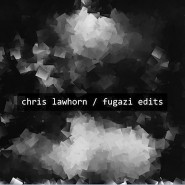 ¶ In on the Remixer: More on this once I’ve fully consumed the entire recording, but in the meanwhile below are streams of three strong tracks off a forthcoming Fugazi-sanctioned album constructed entirely from remixes of instrumental samples from the hardcore band’s recorded output. The album, by Chris Lawhorn, is titled Fugazi Edits (likely because Repeater was already taken), and all proceeds go to charity (“one that works with senior citizens in Washington, D.C. and another that provides aid globally to folks impacted by disaster and civil unrest,” per the press materials). The tracks’ unwieldy, but fittingly literal-minded, titles are made up of the names of the songs from which they are derived.
¶ In on the Remixer: More on this once I’ve fully consumed the entire recording, but in the meanwhile below are streams of three strong tracks off a forthcoming Fugazi-sanctioned album constructed entirely from remixes of instrumental samples from the hardcore band’s recorded output. The album, by Chris Lawhorn, is titled Fugazi Edits (likely because Repeater was already taken), and all proceeds go to charity (“one that works with senior citizens in Washington, D.C. and another that provides aid globally to folks impacted by disaster and civil unrest,” per the press materials). The tracks’ unwieldy, but fittingly literal-minded, titles are made up of the names of the songs from which they are derived.
“Steady Diet – Ex-Spectator – Latin Roots – Place Position” is Fugazi reimagined as a glitch-rock Oval side project:
“Give Me the Cure – Reprovisional -Recap – Modetti – Stacks” is especially, and blisfully, chaotic:
“Nice New Outfit – Greed – Walken’s Syndrome – Facet Squared – No Surprise” — this is the album’s opening track, and it makes the most of a whole lot of staccato source material:
Tracks originally posted at soundcloud.com/chrislawhorn. More at chrislawhorn.com. The release date is October 30.
¶ Riley’s Legacy: In his interview with Caribou/Manitoba/Daphni (aka/né Dan Snaith), Philip Sherburne notes favorable parallels between Daphni’s recent “Yes, I Know” and Terry Riley‘s early soul-refracting remix “You’re No Good,” which dates from the late 1960s.
“That’s an amazing record,” Snaith tells Sherburne of the Riley. “I wasn’t thinking about that when I made it, but thank you.” It may not have been on Snaith’s mind, but it’s notable that About Group did a cover of “You’re No Good” for Domino, a label for whom Snaith has also recorded, albeit several years prior to About Group’s Riley rendition. That bit of trainspotting, by the way, is not a comment intended to call out Snaith on anything; it’s to recognize the circuitous loop of popular soul music finding its way back into popular music via the avant-garde. Read Sherburne’s piece, “Caribou’s Dan Snaith on Daphni, Radiohead, and the ‘EDM Barfsplosion,’” at spin.com. Video of About Group’s “You’re No Good.” And, for good measure, Theo Parrish‘s whizzy Detroit sci-fi remix of About Group’s version. Parrish’s comes closest to resembling the original — well, the original Terry Riley version, which is listenable to via youtube.com. Also on the video service is the original original, the song “You’re No Good” from the Harvey Averve Dozen album Viva Soul, which was the source for Riley’s version.
¶ Parallel Possuming: In news related to the Fugazi album, this 15-minute mix is an edit of work by late-era bluesman Junior Kimbrough by electronic duo Daft Punk:
Originally posted at soundcloud.com/yvessaintlaurent. The work was produced by Daft Punk for Yves Saint Laurent’s recent Spring/Summer 2013 collections, which debuted during Fashion Week in Paris. It was credited as “Music Junior Kimbrough Edited by Daft Punk.” There’s video of the event at pitchfork.com.
¶ In Brief: … Impulse Buy: Please consider supporting the kickstarter.com project Impulse by James Hillery. It’s an interactive music visualizer that turns your music into a video game. I’m in for $10. … USB Alert: Speaking of which, I’m excited that the “blink(1)” project I backed on kickstarter.com passed its funding goal (by quite a bit). It’s a programmable little USB gizmo that can be set up to alert for various triggers and status reports. I’m partially intrigued because I’ve imagined such a thing as a part of a pair of eyeglasses, and also because I wonder about an audio version. … With a Cause: Music for Tom Carter is a compilation album raising funds for Tom Carter (of the band Charalambides), who is recovering from pneumonia. Highlights include the orchestral drone of “Places” by Jon Porras and a haunting live recording of “Mounds” by Common Eider, King Eider. Get the album at musicfortomcarter.bandcamp.com. More at helptomcarter.org. Also raising funds for Carter is the Lunar Jams for Tom Carter compilation, which includes the flanged-out folk of Simon Dallaserra‘s “It’s too Blue to Be Blue” and the spooked-out lo-fi psychedelic rock of Herbcraft‘s “Gossamer Web”; it’s at featheredcoyoterecords.bandcamp.com.
Immersed in the Borneo Rainforest

Resonance FM is based in London, England, but streams and is often downloadable on the web. It’s among the most dependable sources for exploratory audio and, more broadly, for strong programming in general, with shows focused on economics, the graphic novel, and bicycling, among numerous subjects. Several Resonance FM series showcase experimental and adventurous sound, and key among them is Framework, which is “consecrated to field recording and its use in composition — field recording, phonography, the art of sound hunting — open your ears and listen.” As a fundraiser, Framework creates original physical recordings of rare audio, a series called Framework Seasonal, and this season’s is no exception. Released as a DVDR, the audio-only Sunrise in the Sukau Rainforest was recorded during October 2011 by Chris Watson along the river Kinabatangan in Sabah, Borneo. (The Framework site, frameworkradio.net, lists this as Kinabatangen with an “en” at the end, but most text examples seem to show it as “an.”)

To promote the release, Framework excerpted it on two broadcasts, both archived as MP3s. Neither in length or in fidelity do they do justice to the DVD recording, which is 2.5 hours of natural immersion, all light precipitation, loops of birdsong, other animals calls, and an incredible sonic sense of broad geographic distribution. The first of the MP3s collects work by other individuals, and includes Watson’s introduction to the Borneo recording, and the second of the MP3s is a full 55 minutes excerpt.
Download audio file (framework-2012.09.30.mp3)
Download audio file (framework-2012.10.07.mp3)
Writes Watson, in the process of framing the recording:
The Sukau rainforest is a relatively narrow strip of primary forest either side of the banks of the river Kinabatangen in Sabah, Borneo. Access to the forest floor is very difficult as there are no trails, however at the back of the lodge where I was staying there was a narrow old and decaying boardwalk that led, snake like, through the dense undergrowth and out into what felt like another world. Each morning for over a week I left my lodge around 0400h and set off carefully along a zig zag pattern of soft and splintered planks into the velvet darkness. Either side of the red glow from my head torch fireflies and other unknown bioluminescent insects blinked and flashed their alien languages whilst dead ahead the small piercing red reflecting eyes of hunting bats streaked, missile like, directly towards me. On several mornings my GPS guided me to a favourite looping curve at the furthermost point of the 2Km trail where I could stop and fix my mikes in a tree whilst trying to bat off the myriad host of mosquitos that quickly find anything warm blooded that is stationary. I rigged and set away the recording before quietly moving off, my ears straining to hear the distant songs of gibbons, the shrieks of macaques and the low whistle of a pitta. Sunrise, such as it is 30m below the canopy, is also accompanied by the slow drip of condensation percolating down through the grey green gloom from a canopy 30m above as the forest is slowly revealed.
More on Framework at frameworkradio.net. More on Watson at chriswatson.net. The DVDR was produced by touchmusic.org.uk. (Satellite image via Google Maps.)
October 10, 2012
In the Hall of the Speaker King
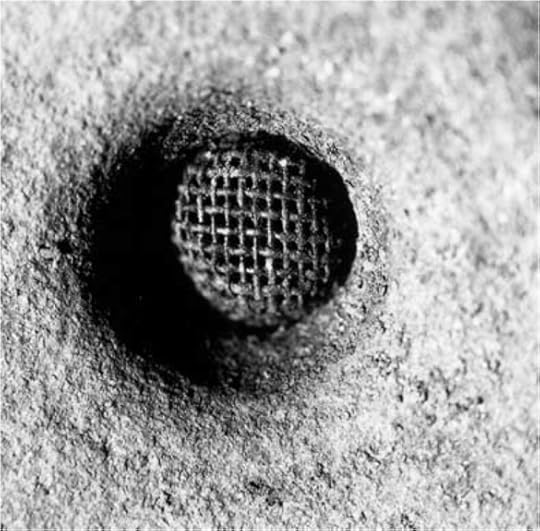
With characteristic low-key aplomb, the Touch podcast series has uploaded an edited live recording of a sound art installation, and kept it unburdened — for better or worse — by much in the way of contextual information. A white-noise effect is in full effect throughout, like the sonic result of one very large, weighty cymbal continuously excited by some low-level mechanical action (MP3). In fact, though, it’s a very different resonant surface. A brief liner note explains this much: “Live room installation capture recording from October 2010 at SONM: Puertas de Castilla in Murcia, Spain. A trio of identical speaker constructions were presented in a black box room, all fed with variations of a similar sonic bed to continuously run for a duration of 24 days. Three cycles distilled here for this listen.” The installation, titled “Dark Matter (Ebb Tide),” is credited to longstanding speaker musician Chop Shop, aka Scott Konzelmann.
Download audio file (Radio84.mp3)
Track originally posted for free download at touchradio.org.uk, where it was accompanied by the above image.
October 9, 2012
The Aura of Jazz from the Near Future
“Nightly No.1″ by melynabarzdis plays with jazz components in a fascinating manner. Foregrounded is a slow piano line that seems to leave a synthesized vapor haze wherever the melody takes it, a haze of smokey aura that deep in the distance reconstitutes in the form of a reflective saxophone solo. The combined effort is a duet of sorts, but a duet as if between two musicians on either side of a massive courtyard who find themselves collaborating long after dark, when they’re both surprised to find the other exists, let alone is awake. As for the tiny little pixel-damage modulations that shift the notes up and down, side to side, at unexpected moments, they lend a broader frame, suggesting this as incidental music to some sort of neo-noir, all overcoats and tricorders.
Track originally posted at soundcloud.com/melynabarzdis.
October 8, 2012
Tangents: Hangout Concerts, Orchestronic Stream, Glass Remixed, …
¶ Beyond Bunker Broadcasts: Ambient musician Mark Rushton has been trying to use Google+ Hangouts “as a way to broadcast live or on YouTube, in unedited form.” Rushton has a great brain for music distribution. Between his website, his podcast, and his SoundCloud work alone, he’s a model of the individual who manages to be productive creatively while still experimenting regularly with infrastructure. He’s made some notes on his blog about using the Hangouts’ Studio Mode, which, according to Google, “optimizes your individual audio for music instead of conversation.” Rushton discusses various issues, some technical, some relating to the potential audience: “the potential boredom of looking at somebody looking at computers.”
Rushton’s post is at markrushton.com.
¶ Orchestral-tronic: Chicago-based composer Olivia Block has posted an excerpt from her forthcoming album, Foranum Magnum. Performed by Chicago Composers Orchestra, it’s a mix of Ligeti/Feldman-style spectral density and the low-level percussion of what could be shuffling feet.
More on Block and the orchestra at oliviablock.net and chicagocomposersorchestra.org.
¶ Screen Sound: “Since your display is flexible – it could be able react to the sound vibrations as you speak. So why not put a laser microphone behind the display to capture those vibrations, and get rid of traditional mic holes?” That’s unwiredview.com reporting on a recently revealed Apple patent application (found via macrumors.com). From the patent: “The internal component may be an output device such as a speaker that transmits sound through the flexible display or an actuator that deforms the display in a way that is sensed by a user. The internal component may also be a microphone or pressure sensor that receives sound or pressure information through the flexible display.” The question that should always linger with patents is the unintended consequences. When Apple announced that the new iPhone 5 would have three microphones, coders live-commenting via Twitter sat up straight for a moment and pondered the potential uses. As for a screen that doubles as speaker and microphone, what opportunities are there — could what’s on the screen impact the sound, could intense visual activity in some way serve as a kind of filter, could the whole thing end up a useful or otherwise artistic feedback system? View the patent: patentscope.wipo.int. Here’s an image from the patent:
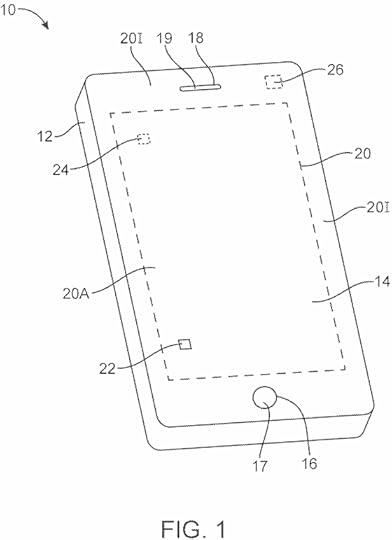
¶ In Brief: … Blue Fringe: Update to recent post on the use of music in the first episode of the new season of Fringe: the theme that the Dr. Walter Bishop character summons up during interrogation, as a means to concentrate, is “Song for the Unification of Europe” by composer Zbigniew Preisner, from the movie Blue (1993), directed by Krzysztof Kieślowski: “Resolving the Sonic Themes in Fringe.” … Glass (Re)Works: That remix album of Philip Glass‘ music featuring Beck, Tyondai Braxton, Amon Tobin, and others mentioned here recently is now streaming in its entirety at npr.org. It’s part of the ongoing Glass-at-75 celebrations, and there is an app in the works as well (it’s by Scott Snibbe Studio, best known for the development of Björk’s Biophilia. … Genre Ceasefire: Just as a side note, it’s interesting that Beck is mentioned as an exemplar of the rockist side of cultural life in a recollection by Tim Munro of the ensemble eighth blackbird. He’s discussing how he was the classical kid, always fighting with his brother, the rock kid, about the relative merits of their pastimes: “While other mothers worried that their kids were doing drugs or having sex, our mother was defusing brawls about the relative superiority of Ligeti and Beck.” The post is from the blog at eighthblackbird.org (found via rgable.typepad.com).”



